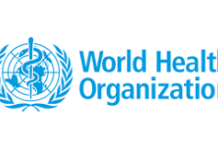The Cardiologist Society of India (CSI) has recommended starting lipid profile tests at age 18. The new guidelines also advocate for non-fasting lipid measurements, representing a significant change in the management of dyslipidemia in India.
Dyslipidemia, characterized by elevated total cholesterol, high LDL-cholesterol (bad cholesterol), increased triglycerides, and low HDL-cholesterol (good cholesterol), is a major risk factor for cardiovascular conditions such as heart attacks, strokes, and peripheral artery disease. In India, dyslipidemia is highly prevalent, with significant variation across states and higher rates in urban areas. According to the ICMR-INDIAB-17 study published in The Lancet in June 2023, 81% of Indians have dyslipidemia, compared to 35% with hypertension and 11.5% with diabetes.
Dr. JPS Sawhney, chairman of cardiology at Sir Gangaram Hospital, pointed out that while the 2019 guidelines from the European Society of Cardiology have been widely adopted, India’s unique lipid profile and lower HDL levels necessitate a tailored approach. Notably, half of all heart attacks in India occur in individuals under 50. Contributing factors include tobacco use, central obesity, sedentary lifestyles, and poor diet. The new CSI guidelines propose stricter targets for very high-risk patients, such as those with a history of heart attacks, angina, stroke, or chronic kidney disease. According to Dr. Sawhney, “These individuals should aim for LDL-C levels below 55 mg/dL or non-HDL levels below 85 mg/dL.”
Dr. Pratap Chandra Rath, president of CSI, emphasized the silent nature of dyslipidemia and the importance of early detection and proactive management. The updated guidelines now support non-fasting lipid measurements to simplify and increase access to testing.
Dr. Durjati Prasad Sinha, honorary general secretary of CSI, remarked, “Non-fasting lipid tests make screening more convenient, encouraging more people to undergo testing and treatment.” The guidelines recommend starting lipid profiling at age 18, or earlier if there is a family history of early heart disease or familial hypercholesterolemia.
According to msn.com, for the general population and those at low risk, the recommended targets are LDL-C levels below 100 mg/dL and non-HDL-C levels below 130 mg/dL. For high-risk individuals, the targets are more stringent, with LDL-C levels below 70 mg/dL and non-HDL-C levels below 100 mg/dL.
























